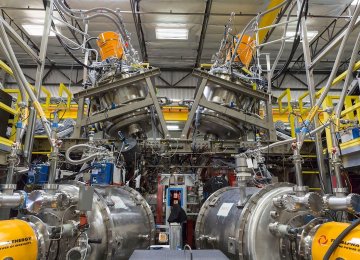An international team of scientists is working on the biggest project in nuclear fusion in France to build the largest magnetic fusion machine—a tokamak—and test the commercial-scale viability of this clean energy source.
The project, known as ITER, is based on the simple premise that the larger the vessel in which fusion reactions occur, the more of them occur, generating more energy, Oil Price reported.
The ITER tokamak will be 10 times larger than the largest existing such device, capable, as per plans, of producing 500 MW of fusion power. To compare the record so far, set by European tokamak JET (the largest existing one), is 16 MW from an input of 24 MW.
The ITER team aims to produce these 500 MW from an input of just 50 MW. Recently, a team of researchers from the Massachusetts Institute of Technology published a paper that suggests this achievement is realistic.
The MIT team tweaked the “recipe” for nuclear fusion in such a way that the output of power was tenfold greater than with the original composition, which consists of 95% deuterium ions and 5% hydrogen ions, forming plasma heated to incredibly high temperatures in the tokamak from the movement of the ions.
Tokamak produces magnetic fields that keep the superhot plasma inside and keep it moving—and hot—but controlling it forever-longer periods of time and making it move faster to produce more energy has been a challenge. Now, MIT scientists may have found the secret ingredient in an isotope of helium, helium-3.
The team, from the Plasma Science and Fusion Center of MIT, added trace amounts—1%—of helium-3 to the traditional combination and tested the new combination at the Alcator C-Mod tokamak. Results showed that the hydrogen-deuterium-helium plasma got wrigglier and hotter, producing 10 times more energy than before.
The test results were so exciting that another team, the one working with the JET in the UK, decided to replicate them.
The replication confirmed the results, raising hopes that a fully functional nuclear fusion reactor may indeed be on the horizon. This horizon is still far, or near, depending on your perspective.
According to the head of the Alcator C-Mod project, Earl Marmar, we could see fusion reactors in the 2030s.











Add new comment
Read our comment policy before posting your viewpoints